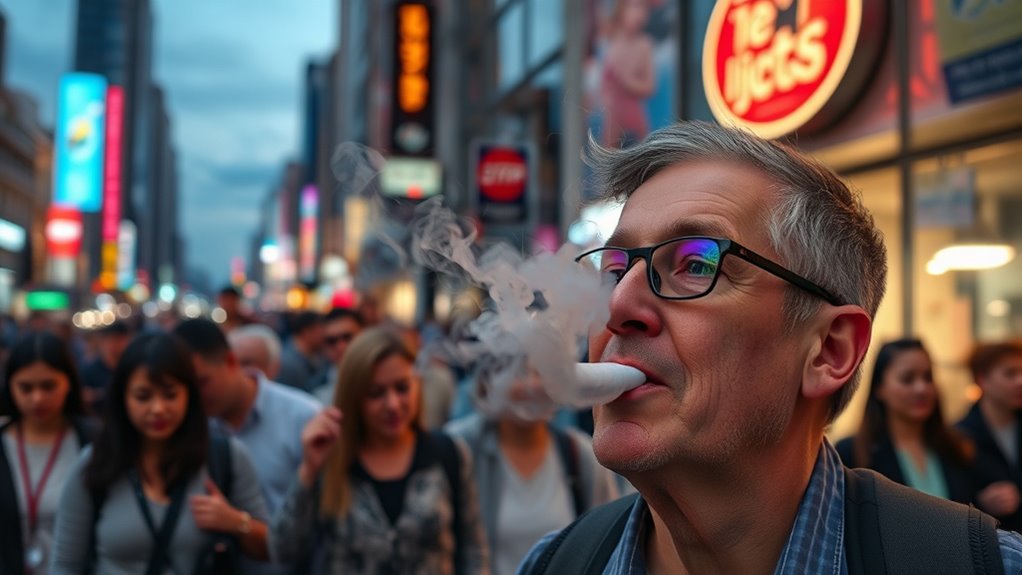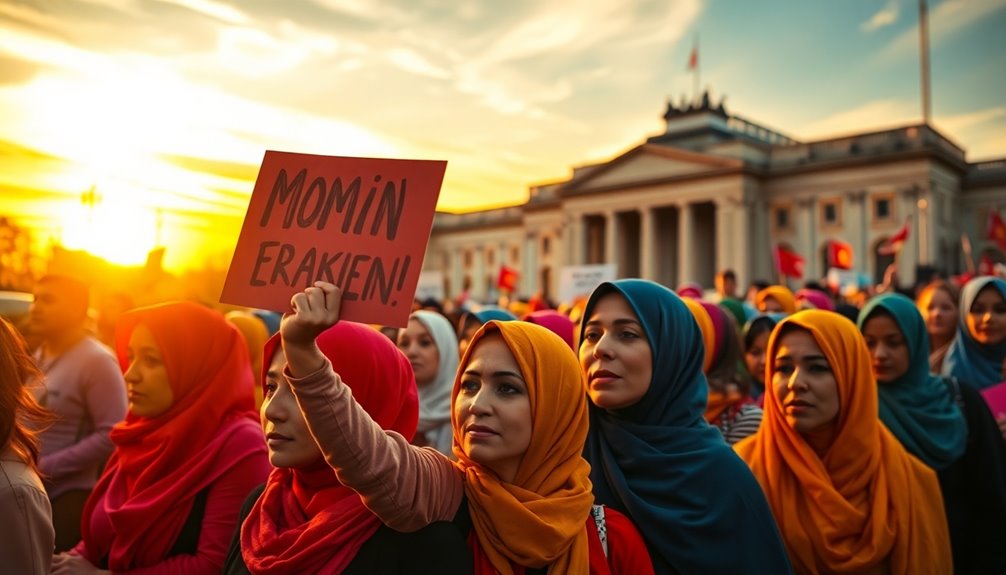Balancing personal choice and social responsibility means understanding that your smoking habits can impact others’ health. Public health policies restrict smoking in spaces like restaurants and parks to protect non-smokers from secondhand smoke and encourage quitting. While everyone has the right to smoke, supporting these measures helps create healthier environments for all. If you explore further, you’ll discover how collective efforts can shape a society with fewer smoking-related health issues.
Key Takeaways
- Public health policies restrict smoking in public spaces to protect non-smokers from secondhand smoke.
- Regulations aim to reduce overall smoking rates while respecting individual rights to choose.
- Encouraging quitting through taxes, restrictions, and support balances personal freedom with societal health.
- Community efforts and awareness promote informed decisions and collective responsibility for healthier environments.
- Balancing personal choice with social responsibility helps minimize health risks and supports public well-being.

Smoking remains one of the leading causes of preventable death worldwide, posing significant challenges to public health. When you light up, it’s not just your health at risk; those around you also face dangers from secondhand smoke. This invisible yet harmful mixture of nicotine, tar, and toxic chemicals can cause respiratory problems, heart disease, and even cancer in non-smokers who are exposed regularly. Recognizing these risks, many governments and health organizations have stepped up efforts to implement tobacco regulation measures. These policies aim to reduce smoking rates and protect the public from the harmful effects of secondhand smoke, balancing individual freedoms with societal health responsibilities.
Smoking causes preventable deaths and harms others through secondhand smoke, prompting policies to reduce tobacco use and protect public health.
Tobacco regulation has become a cornerstone in the fight against smoking-related illnesses. You might notice restrictions on smoking in public spaces, such as restaurants, bars, and parks, designed to minimize secondhand smoke exposure. These regulations not only protect non-smokers but also create environments that encourage smokers to quit or cut back. When authorities enforce such rules, they send a clear message that public health takes precedence over personal convenience. These measures also help denormalize smoking, making it less socially acceptable and reducing its appeal to youth and potential new smokers. You may find that, in many regions, tobacco advertising and sales are heavily regulated or restricted altogether, further curbing the influence of tobacco companies.
While personal choice plays an essential role, public health initiatives aim to strike a balance by respecting individual rights while safeguarding community well-being. If you’re a smoker, these policies can serve as motivation to think about quitting, especially when faced with limited smoking areas or rising taxes on tobacco products. Many public health campaigns offer resources and support to help you quit, emphasizing the benefits of a smoke-free life. At the same time, as a non-smoker or a concerned citizen, you can advocate for stronger tobacco regulation and support policies that limit secondhand smoke exposure. Your voice and actions contribute to a healthier environment for everyone, protecting vulnerable populations like children, the elderly, and those with pre-existing health conditions.
In essence, addressing the harms of tobacco involves a shared effort between individuals, communities, and governments. By understanding the importance of tobacco regulation and the dangers of secondhand smoke, you can make informed decisions and support initiatives that promote public health. Balancing personal choice with social responsibility isn’t always easy, but it’s necessary to create a safer, healthier world where the risks of smoking are minimized for all.
Frequently Asked Questions
How Do Cultural Differences Influence Smoking Policies?
You see that cultural differences shape smoking policies by influencing societal norms and social perceptions. In some cultures, smoking is embraced as part of social life, leading to lenient regulations. Elsewhere, it’s viewed negatively, prompting stricter laws. These cultural norms determine how governments set policies, balancing respect for tradition with public health priorities. Recognizing these influences helps you understand why smoking regulations vary across countries and communities.
What Are the Economic Impacts of Smoking Regulations?
You should understand that smoking regulations critically impact the economy. When restrictions tighten, tax revenue from tobacco sales often decreases, but healthcare costs can drop as smoking-related illnesses decline. Conversely, looser policies may boost tax income but lead to higher healthcare expenses. Balancing these factors is essential for policymakers, as they aim to reduce public health risks while managing the economic implications of smoking regulations effectively.
How Effective Are Smoking Cessation Programs Globally?
You might find smoking cessation programs quite effective worldwide, especially when they address nicotine dependency and offer robust quitting support. These programs, including counseling and medication, help you overcome addiction and improve your chances of quitting successfully. While success rates vary by region, engaging in tailored support increases your likelihood of breaking free from nicotine dependency, making these programs a crucial part of global efforts to reduce smoking-related health issues.
What Role Do Advertising Bans Play in Reducing Smoking Rates?
Advertising bans play a vital role in reducing smoking rates by limiting marketing strategies aimed at promoting cigarettes. When legal enforcement tightens restrictions, it becomes harder for tobacco companies to target vulnerable groups, especially youth. You’ll notice fewer cigarette ads in media and public spaces, which helps decrease smoking initiation. Overall, these bans support public health by reducing exposure and discouraging smoking behaviors, making it easier for individuals to avoid starting or quitting smoking.
How Can Public Health Campaigns Target Youth Smoking?
Think of public health campaigns as a lighthouse guiding teens away from dangerous rocks like teen smoking. You can target youth by creating engaging messages that counter peer influence, emphasizing the risks of smoking, and promoting healthy alternatives. Using social media, peer-led programs, and relatable stories helps reach young audiences effectively. By shining a bright light on the truth, you empower teens to make informed choices and resist peer pressure.
Conclusion
Balancing personal choice and social responsibility is like walking a tightrope—you want to stay true to yourself while protecting others. As you consider smoking, remember that your decisions impact those around you, just as a small spark can ignite a wildfire. By being mindful and respectful, you help create a healthier environment for everyone. Ultimately, finding harmony between individual freedom and public health benefits all, making our community stronger and safer.









